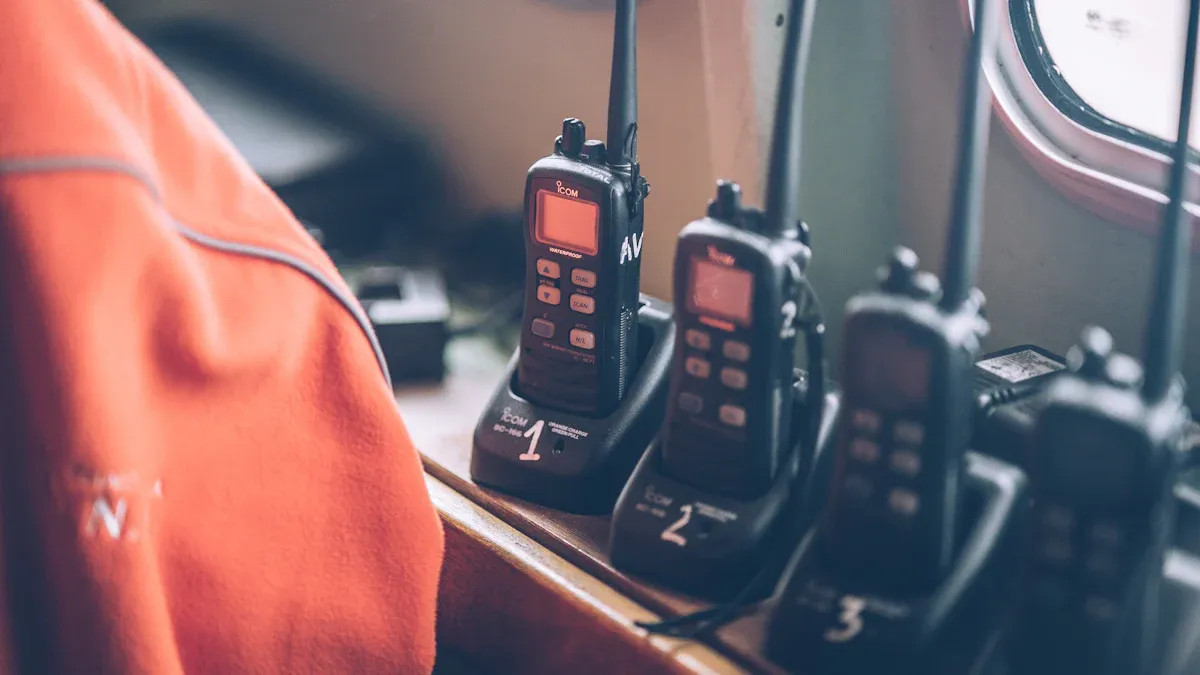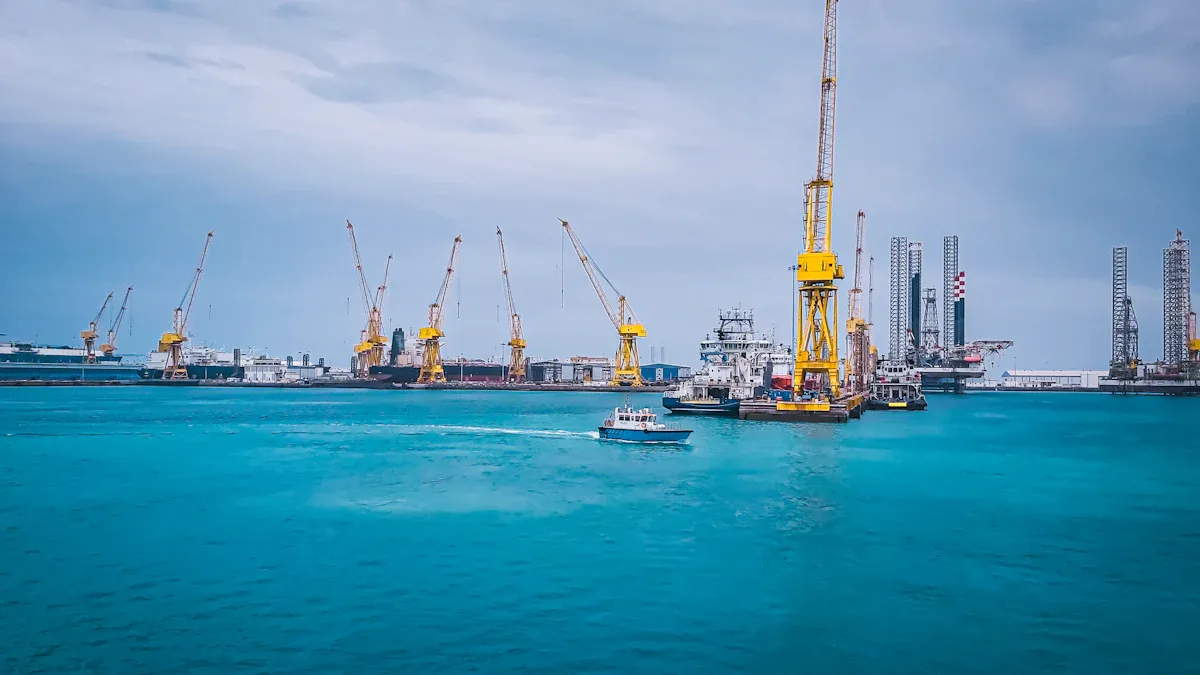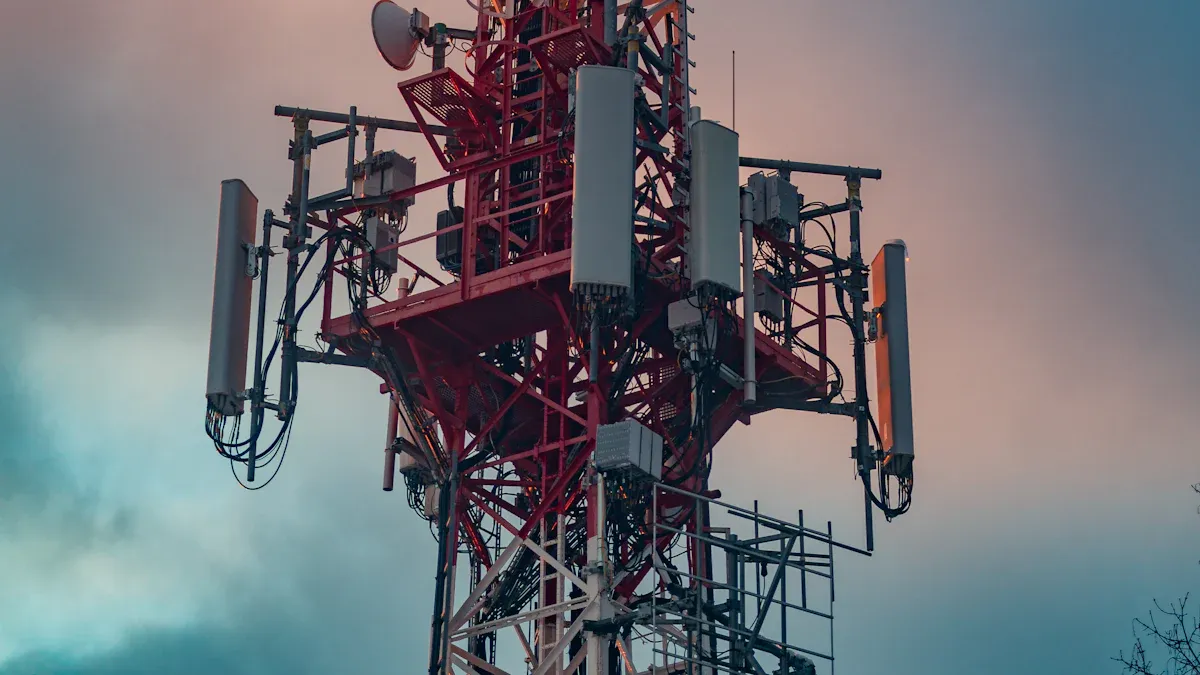
Marine industrial telephones in 2025 set new benchmarks in communication reliability for maritime environments. These devices ensure seamless connectivity during critical operations. Their rugged construction withstands extreme conditions, while advanced features enhance performance. Waterproof industrial telephones and IP industrial telephones lead the way in durability. Mining industrial telephones also gain traction for their robust design and efficiency.
Features of the Best Marine Industrial Telephones

Rugged Design and Durability
Marine industrial telephones excel in environments where durability is non-negotiable. Manufacturers design these devices with reinforced casings, corrosion-resistant materials, and waterproof seals to withstand exposure to saltwater, humidity, and extreme temperatures. Many models meet or exceed IP67 and IP68 standards, ensuring protection against dust and water immersion.
Tip: Devices with shock-resistant features are ideal for offshore platforms, where accidental drops are common.
The rugged design extends the lifespan of these telephones, reducing the need for frequent replacements. This durability makes them a cost-effective choice for maritime operations.
Clear Communication in Harsh Conditions
Reliable communication is critical in maritime environments, where noise, wind, and distance can interfere with signals. Marine industrial telephones incorporate advanced noise-canceling technology to ensure clear audio transmission. High-powered speakers and microphones enable users to communicate effectively, even in noisy engine rooms or during storms.
Some models feature adaptive signal processing, which automatically adjusts audio clarity based on ambient conditions. This innovation minimizes disruptions and enhances operational efficiency.
Advanced Technology for Modern Needs
Modern marine industrial telephones integrate cutting-edge technology to meet the evolving demands of maritime industries. Many devices now support VoIP (Voice over Internet Protocol), enabling seamless communication over satellite or internet networks. GPS tracking features allow operators to monitor the location of vessels or offshore platforms in real time.
Note: Models with Bluetooth connectivity simplify integration with other marine communication systems, such as intercoms and navigation equipment.
Additionally, some telephones offer programmable buttons for quick access to emergency channels, enhancing safety during critical situations.
User-Friendly Interfaces
Ease of use remains a priority for marine industrial telephones. Manufacturers design interfaces with intuitive layouts, large buttons, and backlit displays for visibility in low-light conditions. These features ensure that crew members can operate the devices efficiently, even while wearing gloves or working in challenging environments.
Touchscreen models with customizable menus provide flexibility for users to tailor settings to their specific needs. Training requirements are minimal due to the straightforward design, allowing crews to focus on their tasks without unnecessary distractions.
Performance of Leading Marine Industrial Telephones
Signal Strength and Range
Signal strength and range are critical factors for marine industrial telephones, especially in remote maritime environments. Leading models in 2025 demonstrate exceptional performance in this area, ensuring reliable communication even in challenging conditions. These devices often feature advanced signal-boosting technology, which enhances connectivity over long distances.
A clear line of sight to a cell tower within twenty miles is typically required for optimal performance. Devices can cover up to 5000 square feet when the outside signal strength is strong, such as five bars. However, a minimum outside signal of -110 dB is necessary for effective boosting. The number of devices supported depends on the strength of the external signal, making these telephones adaptable to various operational needs.
| Feature | Description |
|---|---|
| Coverage Area | Up to 5000 sq. ft. based on strong outside signal (5 bars) |
| Number of Devices | No stated limit, varies with outside signal strength |
| Minimum Outside Signal | Must be at least -110 dB for effective boosting |
| Line of Sight | Clear line of sight to a cell tower within twenty miles required |
These specifications highlight the robust capabilities of modern marine industrial telephones, ensuring seamless communication across vast distances.
Battery Life and Efficiency
Battery life plays a pivotal role in the performance of marine industrial telephones. Devices designed for maritime use prioritize energy efficiency to support prolonged operations. Many models now feature high-capacity lithium-ion batteries, which provide extended usage times without frequent recharging.
Some telephones offer power-saving modes that automatically adjust energy consumption based on usage patterns. This feature ensures that the device remains operational during critical moments. Additionally, fast-charging capabilities allow users to recharge their devices quickly, minimizing downtime.
For offshore platforms and vessels, where access to charging stations may be limited, these advancements in battery technology significantly enhance reliability. Operators can depend on their telephones for uninterrupted communication, even during extended voyages or emergencies.
Integration with Marine Communication Systems
Modern marine industrial telephones seamlessly integrate with existing marine communication systems, enhancing operational efficiency. Many devices support VoIP technology, enabling communication over satellite or internet networks. This feature ensures connectivity in areas where traditional cellular signals may be weak or unavailable.
Bluetooth-enabled models allow users to connect their telephones to intercoms, navigation equipment, and other onboard systems. This integration streamlines communication processes and reduces the need for multiple devices. Some telephones also include programmable buttons for quick access to specific channels, such as emergency frequencies or crew communication lines.
These features make marine industrial telephones indispensable tools for maritime operations. By combining advanced technology with user-friendly interfaces, they provide a comprehensive solution for communication needs in diverse marine environments.
Pricing and Cost-Effectiveness
Price Comparison of Top Models
Marine industrial telephones in 2025 exhibit diverse pricing strategies influenced by market dynamics. Manufacturers balance advanced features with affordability to cater to various maritime sectors. A market analysis reveals key factors shaping pricing trends, including economic conditions and technological advancements.
| Aspect | Description |
|---|---|
| Market Dynamics | Key parameters influencing the marine communication systems market, including economic conditions. |
| Pricing Analysis | Insights into pricing trends and strategies relevant to marine industrial telephones. |
| Segmentation | Breakdown of the market into various segments to identify cost-effective strategies. |
Premium models, equipped with VoIP technology and GPS tracking, command higher prices due to their advanced capabilities. Mid-range options offer a balance between performance and cost, appealing to commercial vessels and offshore platforms. Entry-level devices focus on essential features, making them ideal for recreational boats and smaller operations.
Balancing Features with Affordability
Manufacturers prioritize affordability without compromising essential features. Devices with programmable buttons, noise-canceling technology, and waterproof designs provide value at competitive prices. Buyers often evaluate whether the added cost of advanced features, such as Bluetooth connectivity or adaptive signal processing, aligns with their operational needs.
For operators managing large fleets, bulk purchasing options reduce costs significantly. Some manufacturers offer tiered pricing based on the number of units purchased, making high-quality telephones accessible to budget-conscious buyers.
Tip: Buyers should assess their specific communication requirements before investing in premium features to avoid unnecessary expenses.
Long-Term Value and Maintenance Costs
The durability of marine industrial telephones contributes to their long-term value. Devices with reinforced casings and corrosion-resistant materials require minimal maintenance, reducing operational costs over time. High-capacity batteries and energy-efficient designs further enhance reliability, ensuring uninterrupted communication during extended voyages.
Maintenance costs vary depending on the model and usage environment. Premium devices often include warranties and service packages, which mitigate repair expenses. Operators should consider these factors when evaluating the total cost of ownership. Investing in a reliable Marine Industrial Telephone ensures both immediate functionality and sustained performance, making it a cost-effective choice for maritime operations.
Best Marine Industrial Telephones for Specific Environments

Offshore Platforms and Oil Rigs
Offshore platforms and oil rigs demand communication devices that can endure extreme conditions. Marine industrial telephones designed for these environments feature reinforced casings and corrosion-resistant materials to withstand saltwater exposure and high humidity. Many models include noise-canceling technology, ensuring clear communication amidst the constant hum of machinery.
Emergency preparedness is a priority on oil rigs. Telephones with programmable buttons allow quick access to emergency channels, enhancing safety during critical situations. Devices with extended battery life and fast-charging capabilities ensure uninterrupted communication, even during power outages. These features make them indispensable for offshore operations.
Commercial Vessels and Cargo Ships
Marine industrial telephones play a vital role in maintaining operational efficiency on commercial vessels and cargo ships. Reliable connectivity ensures seamless communication between ship and shore, enhancing safety and coordination. Advanced navigation support, integrated with real-time data, aids in weather monitoring and route planning.
Key features include high-powered speakers and microphones for clear communication in noisy environments. Bluetooth-enabled models streamline information exchange by connecting to onboard systems. These devices optimize vessel operations, allowing crews to make informed decisions quickly.
- Reliable Connectivity: Maintains uninterrupted communication.
- Advanced Navigation Support: Assists with weather and route planning.
- Operational Efficiency: Streamlines decision-making processes.
Recreational Boats and Yachts
Recreational boats and yachts benefit from marine industrial telephones tailored for leisure use. These devices prioritize user-friendly interfaces, with large buttons and backlit displays for easy operation. Waterproof designs protect against accidental splashes, ensuring durability.
For recreational users, telephones with GPS tracking enhance safety by providing real-time location data. Compact models with essential features offer an affordable solution for smaller vessels. These devices combine functionality with simplicity, meeting the needs of casual boaters and yacht enthusiasts alike.
Marine Industrial Telephones in 2025 deliver unmatched reliability and performance across diverse maritime environments. Their rugged designs, advanced technology, and user-friendly interfaces make them indispensable for offshore platforms, commercial vessels, and recreational boats. Industrial operators benefit from durable models with extended battery life, while recreational users appreciate compact devices with essential features.
Recommendation: Choose telephones tailored to your operational needs to maximize efficiency and safety.
FAQ
What are the key features to look for in a marine industrial telephone?
- Rugged design for durability.
- Noise-canceling technology for clear communication.
- Waterproof and corrosion-resistant materials.
- Long battery life.
Tip: Always check for IP67 or IP68 certification for maximum protection against water and dust.
How do marine industrial telephones handle extreme weather conditions?
Manufacturers design these devices with reinforced casings and adaptive signal processing. These features ensure reliable performance during storms, high humidity, or extreme temperatures.
Are marine industrial telephones compatible with other onboard systems?
Yes, many models integrate with intercoms, navigation tools, and satellite systems. Bluetooth-enabled devices simplify connectivity, enhancing operational efficiency and reducing the need for multiple devices.
Note: Verify compatibility with your existing systems before purchasing.


